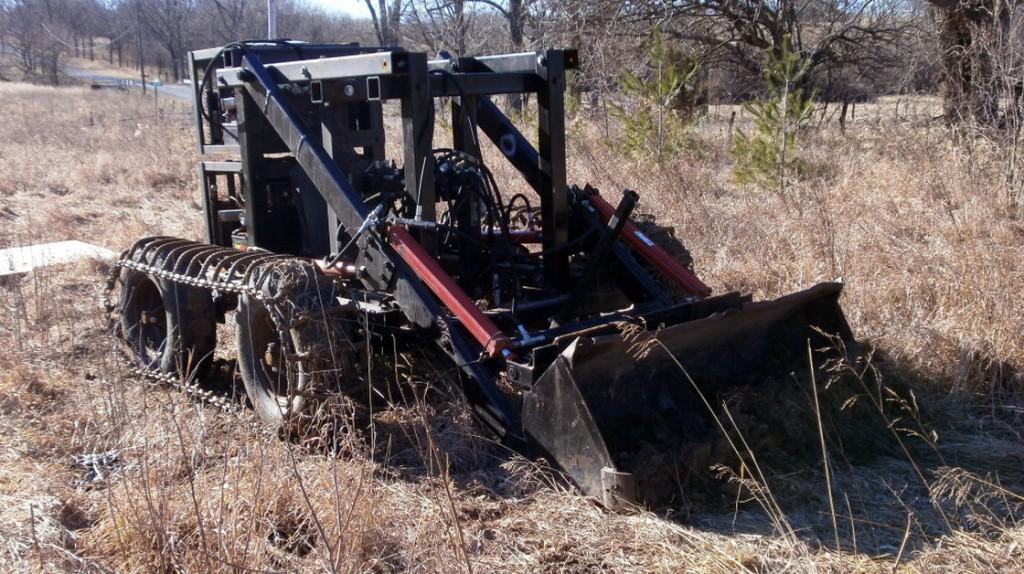Results 1 to 5 of 5
-
07-24-2014, 07:13 AM #1
3D Printing Tools For An Open Source Economy
As 3D printing technology progresses, and more and more items can cheaply be constructed via 3D printed parts, the entire way in which the economy as well as the manufacturing industry functions will change. One project called the Open Source Ecology project looks to build 50 machines with open source instructions. These machines include backhoes, cement mixers, wind turbines and more. Many of these machines are built with parts which have been 3D printed. More details on the Open Source Ecology project can be found here: http://3dprint.com/10110/3d-printers-economy/
What are your thoughts? Could we see drastic economic changes due to open source information and 3D printing? Check out an example of the open source backhoe

-
07-24-2014, 04:22 PM #2Engineer

- Join Date
- Jan 2014
- Posts
- 462
Didn't this stem from a project to define the tools and equipment needed to reboot civilization in the event of a collapse?
We've had open source for quite a number of years now. My personal experience is in the reduced time and expense it takes to bootstrap a business, product or service with the obvious exclusion of businesses or products requiring a long physical development cycle (design, prototype, tool, production run, quality control, etc.).
With the uptake of 3D printing and the availability of open source, I see that physical product development cycle shortening as it becomes easier to get from concept to production. Taken further, that cycle becomes easier for the average person to access, which means we'll see a boom of the availability of custom and customisable products brought to market almost as quickly as they can be thought of. There'll be a bubble, as most of these won't be any good, but it'll be fun to watch and be involved in.
-
07-25-2014, 05:56 AM #3
The project is nice and worthy but I wonder if it can be more than an intellectual exercise at this stage. I’m a little bit ambiguous about it as I can’t estimate its practicality.
A lot of today’s engineering performance relies on material science and “special processes”. Design and putting matter in the right shape is just a small part of it.
For instance : putting some spheres in a track doesn’t make a bearing. What SKF and its competitors have to do to provide long life, high load, low maintenance bearings is a complex mix of various processes tightly controlled. Most of those aren’t DIY in any way, not if you want to end up with consistent repeatable results which are the key to performance and reliability.
So, trying to replicate a turbine when you don’t have the means to replicate the bearings, the electronics or the track and balance tools… I don’t doubt you can make machines that work if you dedicate yourself to it but :
- Will it be efficient and lasting ? is it eco-friendly to build something that doesn’t last or wastes energy ?
- Is it practical to try to replicate medium tech items with limited fabrications means ? Especially if you aim to start from the ground up.
I was about to say that it can still apply if you stick with simple stuff as in the article : hoes, cement mixers … but thinking about it I wonder if it’s not more of the same. For those who think that a screwdriver is just a screwdriver, just try to exchange any mechanics’ tools (Snap-On or FACOM depending on which side of the Atlantic you dwell in) with a low cost replica. I used to be skeptical but there’s a world of difference between a 3€ wrench and a FACOM rotating-handle ratchet.
On the other hand, perhaps it just means you need to adapt your design specifically. Some car manufacturers have started to go that way to produce cars with lower tech, high reliability at low cost. Take the DACIA/Renault partnership for instance. Their Logan has little to no electronics, very simple lines (OK it’s ugly as a troll) and a very good reliability track. Such a success that production couldn’t keep up with orders for months.
-
07-25-2014, 08:22 AM #4Staff Engineer

- Join Date
- Dec 2013
- Location
- Georgia
- Posts
- 934
There's nothing effecient about the machines in this project and I'm pretty sure nobody ever claimed there was. The effort is to make these simple enough to be dropped into poor villages in the third world and maintained by the locals. Such simplicity is mutually exclusive with efficiency in pretty much all cases.
Being "green" was never in the cards, and never has been except in the first world (but that's a touchy subject so I'll stop).
-
07-25-2014, 11:46 AM #5Student

- Join Date
- Jul 2014
- Posts
- 1
... there is only one bug in this “news” ... they are using brute force, not 3D printers, to create mud bricks that are then manually assembled ...






 Reply With Quote
Reply With Quote




Kickstarter campaing LEGENDARY...
Today, 08:02 AM in Free Self Promotion